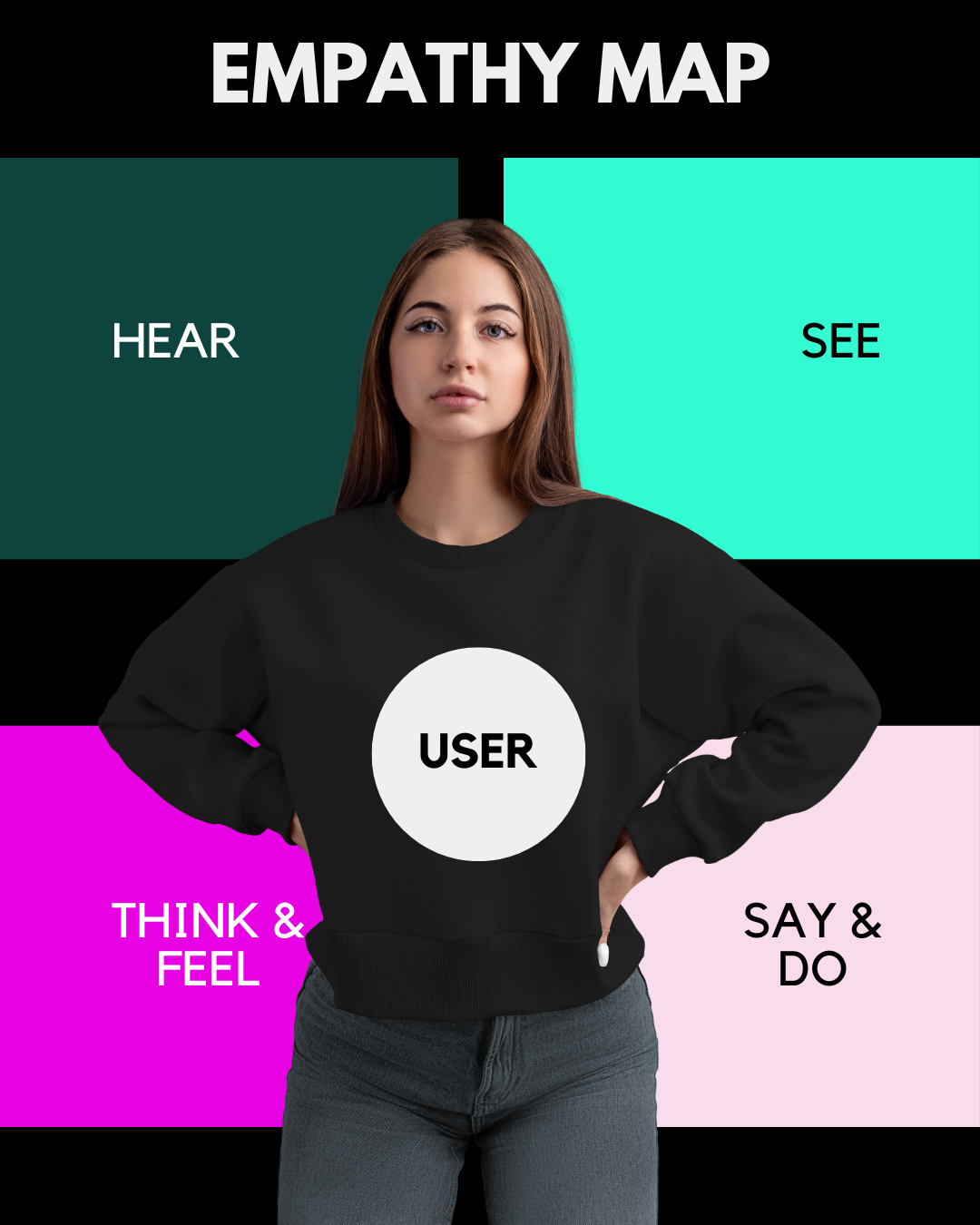Have you ever pondered why some products feel like they're made just for you while others miss the mark?
The answer often lies in the approach known as human centered design (HCD), a method that has been revolutionizing the way products, services, and systems are developed. By prioritizing your needs, feelings, and emotions, HCD tailors experiences that resonate deeply with audiences.
With its focus on empathy, this problem-solving strategy allows designers to create solutions by engaging directly with you, the end-user, ensuring every innovation is drenched in insights about what people truly need. So, delve into understanding the 5 core principles of human centered design to appreciate how it’s shifting the narrative from mere usability to meaningful interactions.
Embarking on the journey of human centered design, you’ll traverse through four distinct phases: Inspiration, Ideation, Implementation, and Validation.
Like any compelling story, they unfold one after the other—from the Inspiration phase, which centers on gathering a wealth of empathy and understanding about you and your requirements, to the Ideation phase, which uses brainstorming to turn these insights into viable concepts. Next comes Implementation, where these ideas take physical form through prototypes.
Last is Validation, the critical stage where your feedback refines these creations, enhancing their feasibility and accessibility. Along your adventure through the article, you’ll encounter lessons in design thinking, uncover the essence of empathy in innovation, and explore how inclusivity and storytelling are woven into the fabric of human-centered design to ensure that it’s not just products but people’s lives that are being thoughtfully crafted.
Empathy: The Core of Human-Centered Design

Empathy is not only about personal connections but also drives business success. It’s the element that ensures your solutions are desirable, feasible, and viable. Without it, you risk creating products that might look good on paper but fail to meet the real-world needs and expectations of users.
Remember, empathy is not synonymous with sympathy; it’s about truly experiencing what others do, not just showing concern. And while it may seem like a natural skill, empathy can be developed and honed through practice, tapping into your intuition, imagination, emotional sensitivity, and creativity. It’s what transforms a stressful situation into a delightful experience for the end-user and what makes human-centered design so powerful.
Iterative Prototyping: Making Ideas Tangible
Iterative Prototyping, a key component of human centered design and design thinking, is a cyclical journey of creation, testing, and refinement. It’s a process that can be woven into any stage of a product’s life, bringing with it the promise of cost-effectiveness and a design that truly centers on you, the user.
Planning
This initial stage sets the foundation. It’s where objectives are defined, and the scope of the prototype is determined based on your needs and the insights gathered through empathy.
01
Ideation
Next, the brainstorming begins. Designers generate a range of ideas, drawing from their understanding of your experiences. This stage is all about creativity and possibility.
02
Prototyping
Now, ideas become tangible. Designers craft representations of solutions, which might range from paper sketches to digital mockups. This is where the concept starts to come to life.
03
Testing
With prototypes in hand, it’s time to put them to the test. Your feedback is crucial here, as it helps identify what works and what doesn’t, shaping the next iteration.
04
Review
The final stage is a moment of reflection. Designers and stakeholders come together to assess the prototype’s performance against your needs and expectations, learning from each iteration.
05
The benefits of this approach are numerous. It allows for the rapid resolution of misunderstandings and ensures that the system requirements genuinely meet your needs. It also fosters improved relationships with clients and stakeholders, thanks to regular updates and visible progress. Think of it like updating a Wiki, such as Wikipedia, where each edit refines the content, or like the evolution of common law, which builds upon past decisions to adapt to new circumstances.
Best practices in Iterative Prototyping encourage a 'fail faster' mentality. It's about being flexible and learning quickly from mistakes. Working asynchronously allows for diverse input and collaboration, ensuring that the design evolves in a way that's responsive to your feedback. Instead of attempting to solve everything at once, the focus is on incremental improvement, which ultimately saves resources and keeps the design process aligned with real user needs.
To implement Iterative Prototyping effectively, it's crucial to select a methodology that fits the project and to allow time for mastery. This isn't just about following steps; it's about embracing a mindset that values your input and adapts fluidly to incorporate new insights. As you engage with products designed this way, you're not just a user; you're an active participant in the design journey.
By integrating Iterative Prototyping into the fabric of human centered design, the pathway to innovation becomes a shared adventure—one where your insights and experiences are the guiding stars.
Inclusivity and Accessibility: Designing for All
In the realm of human centered design, embracing inclusivity and accessibility is akin to opening doors wide for everyone, ensuring no one is left behind because of a barrier they can’t control. This proactive approach, often referred to as Inclusive Design or Universal Design, isn’t just about ticking boxes for compliance; it’s about crafting experiences that resonate with a broad spectrum of humanity. It’s a commitment to recognizing and dismantling the barriers that create exclusion, and in doing so, we pave the way for innovations that serve a wider purpose and reach.
Recognize Exclusion
Start by pinpointing where and why exclusion happens. Is it in the physical design, the user interface, or the language used? By identifying these areas, you can begin to address and rectify them.
01
Embrace Human Diversity
Dive into the rich tapestry of human diversity by researching and understanding the myriad ways people interact with technology. This isn’t just about disabilities; it’s about all the ways we differ and how we can design for those differences.
02
Provide Choice
Offer users multiple ways to engage with your product. Whether it’s through adjustable text sizes, alternative navigation methods, or support for assistive technologies, choice empowers users to interact in ways that suit them best.
03
Consistency Is Key
Maintain consistency across your designs. This helps users form and retain mental models of how your systems work, making it easier for them to use and navigate.
04
Visualizations and Adaptability
Be mindful of how you visualize information. Ensure that your designs are adaptable to various needs, such as providing sufficient color contrast for those with visual impairments and designing layouts that are screen reader friendly.
05
The beauty of inclusive design is its ripple effect; solutions that start by addressing the needs of those with disabilities often end up benefiting a much wider audience. By taking these steps, you’re not just enhancing the user experience for a select few; you’re enriching it for all.
In your journey to create a more inclusive digital world, it’s crucial to measure your success. This isn’t just about feeling good; it’s about concrete actions and results. You can assess digital accessibility through a mix of manual and automated testing, user feedback, and by ensuring compliance with standards like WCAG and ADA. But remember, at the heart of it all is your commitment to the human experience, to ensuring that your design is not just seen or used, but felt and lived by everyone.
By weaving these principles into your design process, you’re not only complying with guidelines; you’re championing a future where every interaction is thoughtfully considered from a multitude of perspectives. This is human centered design at its best—where empathy, innovation, and insights culminate in a prototype that’s not just viable and feasible, but truly accessible.
The Role of Storytelling in Human-Centered Design
In the world of human centered design, storytelling is not merely a way to convey a message; it’s a strategic tool that breathes life into your designs and connects with your audience on a deeper level.
By integrating these storytelling elements, human centered design ensures that your interactions with products and services are not just seamless, but also meaningful. It’s about considering the full spectrum of your experience, from the anticipation of use to the satisfaction of a need met. Remember, good design tells a good story, and in human centered design, you’re always the main character.
Throughout this article, we’ve explored the multifaceted approach of human-centered design, emphasizing the importance of empathy, inclusivity, and the iterative process as essential tools for creating products and experiences that genuinely resonate with users. From diving into users’ lives to understand their needs, iterating on prototypes to perfect solutions, to ensuring accessibility for all, human-centered design sits at the intersection of innovation and empathy, guiding creators to craft experiences that not only meet functional requirements but also deeply connect on a personal level.
As we continue to navigate an ever-evolving landscape of user needs and technology, the principles of human-centered design offer a compass by which to steer our creative journeys. By embedding empathy and inclusivity into the core of our design processes, engaging with users through iterative prototyping, and employing storytelling to forge emotional connections, we create a world where technology not only serves but enhances human experiences. This commitment to putting humans at the heart of design is not merely an approach; it is the bedrock for building a future where every interaction is meaningful and every user feels valued.



